“Is Jazz God?” – an essay by Allison Songbird
A personal journey leading to the discovery of the importance of jazz music, and finding love for it later in life.
...A personal journey leading to the discovery of the importance of jazz music, and finding love for it later in life.
...The writer opines that jazz continues to survive – 100 years after J.A. Rogers’ own essay that highlighted the artistic freedom of jazz – and has “become a fundamental core in American culture and modern Americanism; not solely because of its artistic craftsmanship, but because of the spirit that jazz music embodies.”
...This essay explores memory, music, and the way sound holds emotions that words often fail to capture, blending personal history with a musician’s perspective on unfinished echoes—both in life and in art.
...Short of all the musicians being mind readers, what accounts for free jazz musicians’ – in this instance those playing with the pianist Matthew Shipp – incredible ability for mutual attunement as they play?
...For over 60 years, the legendary recording engineer Rudy Van Gelder devoted himself to the language of sound. And although he recorded everything from glee clubs to classical music, he was best known for recording jazz – specifically the musicians associated with Blue Note and Prestige records. Joel Lewis writes about his impact on the sound of jazz, and what has become of his Englewood Cliffs, New Jersey studio.
...The first time Benny Goodman heard Bix Beiderbecke play cornet, he recalled, he wondered, “My God, what planet, what galaxy, did this guy come from?” (Skretvedt)
...Tad Richards is a prolific visual artist, poet, novelist, and nonfiction writer who has been active for over four decades. ..He frequently writes about poetry, and the following piece about the history of the connection of jazz and American poetry first appeared in the Greenwood Encyclopedia of American Poetry (2005). It is published with the permission of the author.
...The author considers John Coltrane’s intensity and tenderness, and how these two qualities intertwine in his improvisations.
...“Ensemble”—I had heard the director use the term on many occasions, and thought it just meant some undefined collection of musicians. My Jr-high classmates were asked “to meet for ensemble,” or were told that “the ensemble session will be at 10:10 today.” In school, if you joined the band you just started playing; there was no course in Orientation to Band 101 to explain these concepts to us.
...My mother’s ghost comes to me whenever I smoke one of my innumerable cigarettes, when I am re-reading one of her favorite books – like Jane Austen’s Emma – or even when I’m walking, careless and carefree, down the street. And her ghost always arrives when I hear certain music.
...2008. On the seafloor of the Stockholm archipelago near Ingarö the tides swept a body not yet dead back and forth, in eddies of dust that tornadoed up into black, cold water. Jazz had missed its chance again.
...Mac’s Restaurant and Nightclub in Eugene, Oregon is where the blues aficionados in Central Oregon congregate to enjoy Cajun type bar food and dance joyously to pounding, power guitar driven blues. Our friends Alan and Susan go there a couple times a month to satisfy their boogie dance cravings. Whenever my wife and I pass through Eugene, we end up at Mac’s with Alan and Susan. They also attend a lot of blues festivals around their neck of the woods and can be considered connoisseurs.
I too love the blues. I also love jazz. Susan loves the blues. She does not love jazz, “modern” jazz to be specific. Susan explains that when she’s dancing at Mac’s, she feels the pounding bass and drums and screaming vocalist and Fender Stratocaster vibrating her bones and muscles and eyeballs. That’s her heaven. That’s how she wants to
...The late, great trumpeter Clark Terry once offered one of the most pointed, and humorous, comments about the perennial controversies in jazz over race and the perceived abilities of white versus black musicians…
He said, “My theory is that a note doesn’t give a
...We like to immortalize talent in this culture, and in so doing, often decontextualize it, absolving it of complexity and stains. Media especially likes to make angels out of demons, and vice versa, stripping the truth out of images and ideas.
In the case of Chet Baker, William Claxton’s photographs helped especially to immortalize the singer and trumpeter, fixing him in time and space, freezing an idea of him as beautiful, ethereal, ideal.
Chet Baker is almost always remembered as the
...While hunting around the Internet for tributes of Ornette Coleman (a collection of which I will attempt to point readers toward tomorrow), I was reminded of the critic Francis Davis’s essay titled “Ornette’s Permanent Revolution.” Originally published in the September, 1985 edition of The Atlantic, Davis, now the jazz critic for the Village Voice, writes eloquently about the complexities of the great saxophonist’s “clean break from convention.” It is a worthy and timely read…
_____
All hell broke loose when the alto saxophonist Ornette Coleman made his East Coast nightclub debut, at the Five Spot Cafe, in Greenwich Village on November 17, 1959—twenty-five years ago last fall.
The twenty-nine-year-old Coleman arrived in New York having already won the approval of some of the most influential jazz opinion makers of the period. “Ornette Coleman is doing the only really new thing in jazz since the innovations in the mid-forties of
...An essay inspired by my recent experiences witnessing the ceremonies commemorating the 80th anniversary of liberation of several World War II concentration camps in Germany.
...The collection of 14 interviews is an impressive and determined effort, one that contributes mightily to the deepening of our understanding for the music’s past impact, and fans optimism for more.
...In this edition, due to a current and ongoing obsession with drummer Matt Wilson’s 2006 album The Scenic Route, Douglas Cole writes another poem in response to his experience listening to the track “Feel the Sway.”
...“She is a constellation,” I thought
listening to Ella Fitzgerald.
The magic spell has been cast,
and time has been stopped. OK,
Jazz has produced an impressive number of gifted child musicians. In this edition, David J. Rife writes about stories whose theme is World War II and jazz
...The cover of the 1959 album The Greatest Trumpet of Them All by the Dizzy Gillespie Octet. A song from the album, “Just by Myself,” is featured on Bob Hecht’s new 28-song playlist – this one devoted to octets.
...An ongoing series designed to share the quality of jazz poetry continuously submitted to Jerry Jazz Musician.
...My parents had this big Crosley
and a stack of albums —
Goodman, the Dorsey Brothers —
and some nights I’d get up from bed
and peek into the living room
where my mother and father
slowly waltzed in place.
In a 2005 Jerry Jazz Musician interview, Paul Desmond biographer Doug Ramsey discusses his subject – a jazz artist who transcended genres to establish one of the most immediately recognizable sounds in all of music.
...Jazz has produced an impressive number of gifted child musicians. In this edition, David J. Rife writes about stories whose theme is child prodigies
.... . An ongoing series designed to share the quality of jazz poetry continuously submitted to Jerry Jazz Musician. Thanks to the poets…and enjoy! . . ___ . . “Diz with Bird” by Martel Chapman . ___ . Life is Jazz Life is jazz, always improvisational. Groovin’ and swingin’, low down and funky, stately … Continue reading “21 jazz poems on the 21st of May, 2025”
...I had an old car
with a fender rusted out
on the back left side
and it was just another spot
of decay and breakdown
on that old machine
A conversation with the two-time New York Times bestselling author of The Black Friend and Patriarchy Blues, who in 2023 was honored with the Malcolm X and Dr. Betty Shabazz Vanguard Award,. He has also been a member of The Root list of “100 Most Influential African Americans.”
...Bob Hecht’s 26 song playlist features septets, and includes the likes of Wynton Marsalis, Jimmy Rowles, Charles Mingus, Chick Corea, Art Farmer, and Cannonball Adderley.
...Day six
and the dissonance
of my pneumonia
has become as percussive
as Cecil Taylor’s piano.
In this edition, Rife writes about the influence of Billie Holiday in several short stories and novels.
...Look at that dude!
BEEP!
Look at his horn!
BOP!
Look at those cheeks!
Salt Peanuts!
POP!
The writer shares his enthusiasm for a Jerry Jazz Musician contributing writer’s book – a unique blend of poetry, essays and personal memoir, with jazz at its core.
...I’m listening to the Köln Concert
and it is déjà vu. It’s Keith Jarrett playing
the music I always knew but never listened to.
It is every night at midnight putting away the violin
and sitting alone somewhere on the Kansas prairie
An ongoing series designed to share the quality of jazz poetry continuously submitted to Jerry Jazz Musician.
...“Community Bookshelf” is a twice-yearly space where writers who have been published on Jerry Jazz Musician can share news about their recently authored books and/or recordings. This edition includes information about books published within the last six months or so (September, 2024 – March, 2025)
...In this edition, Rife writes about the “chicks” (energetic women, attractive, and open to experience) and “hens” (older women who have either buried or lost a loved one, and who seem content with their lives) who are at the center of stories with jazz within its theme.
...The cover of the 1960 debut album by the Jazztet, co-founded by the trumpeter Art Farmer and the tenor saxophonist Benny Golson, and which always featured a trombonist and a piano-bass-drums rhythm section. Golson wrote much of the music, but “Hi-Fly” – a tune featured on Bob Hecht’s playlist devoted to sextets – was written by pianist Randy Weston, and appears on the 1960 album Big City Sounds.
...In this edition, Rife writes about the “queering” of jazz fiction, examples of which are described in the five books/short stories he reviews.
...There are few American lives more powerful or more moving than that of C. L. Franklin. Born in rural Mississippi, he would go on to become the most famous African American preacher in America. His style of preaching revolutionized the art, and his call for his fellow African Americans to proclaim both their faith and their rights helped usher in the civil rights movement. In this 2005 Jerry Jazz Musician interview, Franklin biographer Nick Salvatore talks about this immensely complicated public figure (and father to Aretha).
...The Cannonball Adderley Quintet, on the cover of their 1960 Riverside Records album Live at the Lighthouse. The ensemble – including Cannonball’s brother Nat on cornet, Victor Feldman on piano, Sam Jones on bass, and Louis Hayes on drums – is a classic hard bop band, and their performance of “Blue Daniel” is part of the 22-song playlist consisting of memorable quintet performances assembled by jazz scholar Bob Hecht.
...In this edition, Rife writes about the “quest” theme in contemporary jazz fiction, where long-lost instruments and rumored recordings take the place of more dramatic artifacts like the Holy Grail.
...Our annual year-end compilation of jazz albums oft mentioned by a wide range of critics as being the best of 2024
...A 25-song playlist that focuses on quartets, featuring legends like Miles, MJQ, Monk, Brubeck, and Sonny, but also those led by the likes of Freddie Redd, David Murray, Frank Strozier, and Pepper Adams.
...In this edition, Rife writes about jazz novels and short stories that feature stories about jazz music’s international influence.
...The writer suggests taking to music during these divisive times – specifically the composer Guillermo Lago’s piece “Sarajevo”
...Some thoughts on a new book of photography by frequent Jerry Jazz Musician contributing writer Bob Hecht
...Art Tatum plays fast
fast as Sundays
fast as sunset in November
fast as a hurry up offense
fast as a 20 dollar bill flying down the street
The author relates a story that led to his eventual friendship with the jazz greats Sheila Jordan and Mark Murphy…
...In this edition, Rife writes about jazz novels and short stories that feature stories about women, written by women.
...In this 27-song playlist, Bob Hecht focuses on non-traditional trio recordings.
...I present you with a disgusting floor,
covered with ocher lumps of puke,
piles of paper refuse, cigarette butts,
all swimming in a sea of black water.
The myths surrounding the life and career of blues legend Robert Johnson is discussed in a November, 2003 interview with the blues historian Barry Lee Pearson.
...In this edition, Rife writes about jazz novels and short stories that feature a theme of “mystery.”
...In the history of jazz there have been many variations of instrumentation within the trio format (think of Benny Goodman’s trio or Jimmy Giuffre’s) but on this playlist, Bob Hecht concentrates on a handful of the classic trio configurations—either piano, bass and drums, or in a few instances, piano, guitar and bass……
...An essay remembering the late jazz musician Michael “Dodo” Marmarosa, awarded Esquire Magazine’s New Star Award in 1947, and who critics predicted would dominate the jazz scene for the next 30 years.
...Prisms resound, glow dissonant—
refracted word-dyes salvaged from malaise.
A bleeding swatch of rainbow,
cordless stains on muslin,
stacks of frightened tightropes,
my slippers thin and worn –
This edition of the writer’s poetic interpretations of jazz recordings and film is written in response to Oliver Nelson’s 1961 recording The Blues and the Abstract Truth
...“Community Bookshelf” is a twice-yearly space where writers who have been published on Jerry Jazz Musician can share news about their recently authored books and/or recordings. This edition includes information about books published within the last six months or so (March – September, 2024)
...In this edition, Rife writes about three novels/short fiction that include stories about Scott Joplin, the primary forerunner and significant influencer of jazz.
...In this edition of extensive jazz playlists, the award-winning jazz producer and scholar Bob Hecht presents a 31-song playlist of historic and contemporary duo performances that exemplify the essence of jazz as a conversation between individuals, an open exchange between equal partners.
...The esteemed writer tells a story about the jazz world before, during, and after the 1959 recording of Kind of Blue, and how the album’s three genius musicians came together, played together, and grew together (and often apart) throughout the experience.
...A story about a Jewish kid coming of age in Alabama and discovering his identity through music, in particular the interstellar sound of Sun Ra.
...In this fourth edition featuring excerpts from his book, Rife writes about five novels/short fiction that include stories about the interconnected cultures of jazz, dancing and nightclubs.
...In this edition of extensive jazz playlists, the award-winning jazz producer and scholar Bob Hecht focuses his attention on solo piano performances, including those by artists such as Bud Powell, Thelonious Monk, Art Tatum, Tommy Flanagan, Cedar Walton, Bill Evans, Jaki Byard, Keith Jarrett.
...Remembering the genius of the multi-instrumentalist who played with the likes of Bix Beiderbecke, Benny Goodman, Red Nichols, Miff Mole, and Joe Venuti
...The most eminent jazz writer of his generation is now a recipient of the 2025 National Endowment for the Arts (NEA) Jazz Masters Fellowship.
...In this third edition featuring excerpts from his book, Rife writes about four novels/short fiction that include stories involving Louis Armstrong.
...As Sonny Rollins has said, “Jazz is about taking risks, pushing boundaries, and challenging the status quo.” Could there be anything riskier—or more boundary-pushing—than to stand naked and perform with nowhere to hide? Bob’s extensive playlist is comprised of such perilous undertakings by an array of notable woodwind and brass masters who have had the confidence and courage (some might say even the exhibitionism) to expose themselves so completely by playing….alone.
...Stripped down standards
ache the air. Keith Jarrett
with chronic fatigue
recorded “I Got It Bad
(And That Ain’t Good)”
in sessions so short
he sometimes ended
before the song.
In this, the 17th major collection of jazz poetry published on Jerry Jazz Musician, 50 poets from all over the world again demonstrate the ongoing influence the music and its associated culture has on their creative lives.
.... . This space on Sunday is generally reserved for a single poet to read one of their works, but this week’s issue -Father’s Day – features 23 poets who weigh in on the complexity of their relationship with their father, revealing love, warmth, regret, sorrow – and in many cases a strong connection … Continue reading “The Sunday Poem(s): 23 Poets remember their father…”
...In this edition, Rife writes about four novels/short stories that include stories involving relationships between fathers and children.
...A short-listed entry in the recently concluded 65th Short Fiction Contest concerns a child’s courage in the face of abuse, displayed in her solemn ritual of burying her stuffed toys.
...We’ll have a little brunch for you —
pecan-crusted French toast,
oysters, smoked salmon,
a charcuterie board.
David Rife’s essay/reviews about jazz-themed novels and stories. In this edition, Rife writes of three novels that explore challenges of the mother/daughter relationship.
...An extensive playlist built around examples of prominent pianoless modern jazz.
...While small group swing was shunned by the jazz critical establishment for being too flamboyant and too close a cousin to the emerging (and despised) rock and roll, Richards makes the case that small group swing players like Illinois Jacquet, Louis Jordan, Big Jay McNeely, Joe Liggins, Red Prysock, T-Bone Walker and Ray Charles played a legitimate jazz that was a more pleasing listening experience to the Black community than the bebop of Parker, Dizzy, Bud Powell and Monk. It is a fascinating era, filled with major figures and events, and centered on a rigorous debate that continues to this day – is small group swing “real jazz?”
...Trading Fours with Douglas Cole is an occasional series of the writer’s poetic interpretations of jazz recordings and film. This edition is written in response to the music of Wayne Shorter.
...In addition to being one of the greatest musicians of his generation, this Ohio native was an activist, leading “Jazz and People’s Movement,” a group formed in the late 1960’s who “adopted the tactic of interrupting tapings and broadcasts of television and radio programs (i.e. the shows of Johnny Carson, Dick Cavett [pictured] and Merv Griffin) in protest of the small number of African-American musicians employed by networks and recording studios.” Who was he?
...“Community Bookshelf” is a twice-yearly space where writers who have been published on Jerry Jazz Musician can share information about their recently authored books.
...Floyd grabbed his cane and stepped out of his air-conditioned car into the late August heat. The afternoon sun warmed his stiff joints. It felt good. From the Honda’s back seat he pulled a battered guitar case, locked the car and shambled down Monterey Street to Premier Music Store. Its front door stood closed against blasts of hot Santa Ana winds.
...These poems are new submissions by five poets relatively new to Jerry Jazz Musician, and are an example of the writing I have the privilege of encountering on a regular basis.
...“Afloat” – a finalist in the 64th Jerry Jazz Musician Short Fiction Contest – is about a troubled man in his 40s who lessens his worries by envisioning himself and loved ones on a boat that provides safety and ease for all of them.
...In a 2002 interview, Carla Kaplan, editor of Zora Neale Hurston: A Life in Letters, talks about the novelist, anthropologist, playwright, folklorist, essayist and poet whose work is is taught in American, African American, and Women’s Studies courses in high schools and universities from coast to coast.
...A nine-hour long Spotify playlist featuring songs by the likes of Horace Silver, Lee Morgan, Miles Davis, Wayne Shorter, Ahmad Jamal, and Dizzy Gillespie that demonstrates how the Latin music influence on jazz has been present since the music’s beginnings.
...Trading Fours with Douglas Cole is an occasional series of the writer’s poetic interpretations of jazz recordings and film. This edition is influenced by Stillpoint, the 2021 album by Zen practitioner Barrett Martin
...Take tonight, for instance.
I can’t ask you for the moon
the way Sinatra commands it
with his first-class confidence.
Let alone Jupiter or Mars.
One-third of the Winter, 2024 collection of jazz poetry is made up of poets who have only come to my attention since the publication of the Summer, 2023 collection. What this says about jazz music and jazz poetry – and this community – is that the connection between the two art forms is inspirational and enduring, and that poets are finding a place for their voice within these virtual pages.
...The writer tells his story of playing guitar with a symphony orchestra, backing up jazz legend George Shearing.
...Takes on love and loss, and memories of Lady Day, Prez, Monk, Dolphy and others…
...The author speaks with Bob Hecht about his book and his decades-long dedication to the genius of Pepper Adams, the stellar baritone saxophonist whose hard-swinging bebop style inspired many of the top-tier modern baritone players.
...Hammers in a construction site
sound like a band warming up,
weird solos by a bunch of drummers.
Jimmy Smith comes down draped in groove,
sermonizing your stride,
clouds chest-out like they know something.
A man standing in front of a house,
shouting, I got nothing from you!
The former Village Voice writer Gary Giddins, who was prominently featured in Ken Burns’ documentary Jazz, and who is the country’s preeminent jazz critic, joins us in a December 23, 2002 conversation about jazz legend Thelonious Monk.
...Seven poets combine and art of jazz with an act of love…
...I don’t know where it starts, he said, but can you imagine
watching They Cloned Tyrone and the music playing,
almost the whole dance club version of Love Hangover,
I can’t even watch anything, my mind looks through the settings,
the dialogue is like a crowd talking in a club and I want to listen in,
go into that Diana Ross whisper singing love voice
A poetic appreciation for the work of the legendary pianist
...An account that the photographer Veryl Oakland shared of his time spent with Carla Bley and her then-husband Michael Mantler during her visit to the San Francisco Bay area in 1979. This encounter is an example of how she’d find inspiration for her music; in this case within the “the marvelous inner workings of mechanical music boxes.”
...Earlier this year I invited poets to submit jazz-themed poetry that didn’t need to strictly follow the 5-7-5 syllabic structure of formal haiku, but had to at least be faithful to the spirit of it (i.e. no more than three lines, brief, expressive, emotionally insightful).
This collection, featuring 22 poets, is a good example of how much love, humor, sentimentality, reverence, joy and sorrow poets can fit into their haiku devoted to jazz.
...A 28-song Spotify playlist devoted to Autumn, featuring great tunes performed by the likes of Frank Sinatra, Tony Bennett, Sarah Vaughan, Charlie Parker, Sonny Rollins, Bill Evans, Lester Young, Stan Getz, and…well, you get the idea.
...Trading Fours with Douglas Cole is an occasional series of the writer’s poetic interpretations of jazz recordings and film. In this edition, the poet connects the recordings of Jessica Williams’ “Little Waltz” and Gene Harris’ “Summertime.”
...“Community Bookshelf” is a twice-yearly space where writers who have been published on Jerry Jazz Musician can share information about their recently authored books.
...This edition features poetry chosen from hundreds of recent submissions, and from a wide range of voices known – and unknown – to readers of these collections. The work is unified by the poets’ ability to capture the abundance of jazz music, and their experience with consuming it.
...Vivaldi, especially “The Four Seasons,”
keeps showing up in forms of jazz:
a hint, a structure—but try unraveling
any musical DNA you go straight back
to singing and to drum, voice and poetry—
he was/
a flightless bird/
bright as sky/
full of natural lies/
and sweet conflict/
when speaking the/
jazz
Naturally, his lyrics are cued a cappella./“I’m home” slips from his lips,/sizzles like the taste of what I’m baking in the oven,/as he unwinds his day.
...Two poems devoted to Steely Dan’s 1977 recording of “Aja”
...In this May, 2023 interview, Shipton and Jerry Jazz Musician contributing writer Bob Hecht talk about Mulligan’s unique contributions to modern jazz.
...The poet recalls an evening when he serendipitously encountered jazz in “The Point” neighborhood of Boston
...Nine poets, nine poems on the leading figure in the development of bebop…
...The poet writes a fantasy about Parker’s time in the California asylum Camarillo…a 15 song playlist accompanies the poem
...In a 2014 Jerry Jazz Musician interview, the late jazz writer and cultural critic Stanley Crouch shares his thoughts on Charlie Parker, a great genius of modern music…
...The poet describes the clear, crisp sound of listening to jazz music on vinyl
...Poet musings on Ellington — and big band music, by the poets Claire Andreani, Russell duPont, Laurinda Lind and Terrance Underwood
...A poem and an essay devoted to the legendary jazz guitarist Wes Montgomery
...Several poems devoted to the pianist Ahmad Jamal, who died on April 16, 2023 at the age of 92.
...Contrafacts, as such reworkings are called, are the product of writing a new melodic line over an existing set of chord changes, thereby disguising or sometimes completely obscuring the identity of the original piece.
...The poet writes about the significance of Miles Davis’s “Kind of Blue”, and why it is the “it” jazz recording…
...The poet reflects on loss, fate, remembrance, and hopefulness
...This is the 14th extensive collection of jazz poetry published on Jerry Jazz Musician since the fall of 2019, when the concept was initiated. Like all previous volumes, the beauty of this edition is not solely evident in the general excellence of the published works; it also rests in the hearts of the individuals from diverse backgrounds who possess a mutual desire to reveal their life experiences and interactions with the music, its character, and its culture.
...The poet writes on how a musician putting their heart into their playing is a key to a great solo
...The poet writes about the impact Jimi Hendrix’s performance of “Star Spangled Banner” had on America
...News of a previously unreleased set of studio performances recorded in Holland in 1979 by legendary trumpeter Chet Baker
...The poet writes about the origins of our personal blues, and how they can affect us…
...In this edition, the poet writes about attending a McCoy Tyner performance (or “ceremony”), and hearing the musician’s one word philosophy of music.
...The author writes about his hometown of Lubbock, Texas, and some of the musicians and events that made up that city’s thriving music scene during the mid-20th century
.... . In a 2009 interview, James Gavin, author of Stormy Weather: The Life of Lena Horne, discusses the challenging yet inspiring life of one of the 20th century’s most revered entertainers . . ___ . . James Gavin, author of Stormy Weather: The Life of Lena Horne . ___ . . . … Continue reading “A Women’s History Month Profile: Lena Horne”
...Writers talk about influential life experiences with writing, literary figures who inspired their work, overcoming creative and economic challenges, and where they fit in today’s publishing model.
...Billie Holiday scholar and biographer Farah Griffin discusses one of the most gifted jazz artists of all time, and one of the most elusive…
...In this short listed entry from the 61st Short Fiction Contest, a man’s eating habits alter along with the cycles of his love life.
...Mr. Mott discusses this posthumous anthology of extraordinary, thought-provoking uncollected essays by Stanley Crouch.
...The poet’s humorous look at the importance of musicians showing up, and on time, for their performance!
...Ralph Ellison biographer Arnold Rampersad talks about the complex life of the author of Invisible Man, the celebrated work that focuses on racial and economic issues of mid-20th century America
...In two complete essays from the collection “Victory is Assured,” Crouch takes up two topics he had considerable opinions about – Miles Davis and Billie Holiday.
...A sampling of recent submissions from six poets who, until now, have not had their work published on Jerry Jazz Musician
...The poet writes of how the desire for love can be distilled into one golden wail of a Billy Strayhorn declaration.
...“Blow by Blow” is a portrait of Berkeley, California in the 1970’s, and the fusion jazz that was finding its way onto the scene at that time.
...An 18 song playlist to demonstrate some of the genius and versatility of the Canadian jazz musician Don Thompson
...An appeal for contributions to support the ongoing publishing efforts of Jerry Jazz Musician
...The author discusses the iconic tenor saxophonist who is one of the greatest jazz improvisers of all time, a lasting link to the golden age of jazz
...The poet writes of Jerome Kern and Oscar Hammerstein’s hit song, and offers an 18 song version playlist
....This collection of jazz poetry – the largest yet assembled on Jerry Jazz Musician – demonstrates how poets who are also listeners of jazz music experience and interact with the spontaneous art that arises from jazz improvisation, which often shows up in the soul and rhythm of their poetic language.
...“The Weeping Tree” arises from the poet listening to (and watching) Sinne Eeg & Thomas Fonnesbæk perform “Willow Weep For Me”
...Chuck Sweetman and Patricia Carragon write two very different poems, both inspired by Frank Sinatra
...Salsa musicians Tony Martinez and Sal Rodriguez are determined to get paid by Billy Barata, their notoriously dishonest bandleader.
...In the winter of 1981 we were hired to play Downtown—
a performance in Greenwich Village billed “Frank Zappa Presents:
a Musical Tribute to Edgard Varèse.” I sat on stage,
wearing black, tuning my violin, warming up,
looking out at the audience milling around, most of them
covered in tattoos and piercings of every body part
“Fire From Heaven” arises from the poet Douglas Cole listening to John Coltrane’s 1964 album A Love Supreme
...That inner sense of freedom,
a natural balance
with an impulse
to preserve the day,
as the equinox
tilts from a window
with a view of leaves on fire.
A discussion about the revolutionary, non-conformist poet Claude McKay’s complex early life that culminated in a pioneering role in American letters
...Mr. Donnelly’s “The Sweatshop” is a memoir about about his time working in a music accessory sweatshop by day, and slogging it out on the club circuit by night…
...A Spotify playlist featuring standard tunes from the Great American Songbook as performed by hard bop musicians.
...“The Ghost Note” arises from the poet listening to “From Paris With Love” from Melody Gardot’s 2020 album Sunset in the Blue
...A broad collection of jazz poetry authored by an impressive assemblage of regular contributors and established poets new to this publication – all of whom open their imagination and hearts to the abundant creative experience they derive from this art.
...The poet’s tender remembrance of his father’s passion for the clarinet
...He’s a-stagger the patrilineous
hillside grove wonder tunnels
street black ribbons going bower-deep
with sunlight glitter punctuations
feeling the great payoff on the way
The authors describe the circumstances surrounding the creation of an extended version of Duke Ellington’s little-known 1953 composition “Janet”
...The poem “Convergence” rises from listening to the 1960 album, “Stan Getz Quartet at Large”
...A selection of poems from Michael L. Newell’s new collection of poetry, Still the World Beckons: New and Selected Poems (cyberwit.net)
...Bob Hecht recalls his experience of first hearing “Kind of Blue,” the 1959 jazz album by trumpeter Miles Davis
...Mr. Cole’s suite consists of eight poems, all interpretations from songs on pianist Tommy Flanagan’s album Sunset and the Mockingbird Suite
...Over 60 poets from all over the world celebrate their love of jazz…in poetry.
...Inspired by the essays collected in the jazz and cultural critic Nat Hentoff’s 2010 book At the Jazz Band Ball: Sixty Years on the Jazz Scene, in this series of poems Sean Howard uncovers new relationships and resonances in the author’s writing – reusing, recycling, and remixing text from the book as poetry – while allowing him the opportunity to pay a personal tribute to a writer he reveres.
...Carla Kaplan, editor of Zora Neale Hurston: A Life in Letters, talks about the novelist, anthropologist, playwright, folklorist, essayist and poet
...Drummer Joe La Barbera talks about his book, and the significance of his experience working in Bill Evans’ last trio
...Set forth beautiful one
open sea and open sky
as far as your eye can see
full wind filling the sails
pushing those hesitant steps
three at a time before
the cymbal crash of wave
In a 2014 Jerry Jazz Musician interview, the late jazz writer and cultural critic Stanley Crouch shares his thoughts on Charlie Parker, the great genius of modern music…
.
...do you hear the wind?
see that scarlet leaf
dance on concrete?
I am that wind
I am that leaf
I am that dance
In The Fire is Upon Us: James Baldwin, William F. Buckley Jr., and the Debate over Race in America, author Nicholas Buccola tells the story of the historic 1965 Cambridge Union debate between Baldwin, the leading literary voice of the civil rights movement, and Buckley, a staunch opponent of the movement and founder in 1955 of National Review, the leading conservative publication. The evening’s debate topic? “The American dream is at the expense of the American Negro.”
Buccola discusses his book in a July 23, 2020 interview with Jerry Jazz Musician editor/publisher Joe Maita
...Gordon sat in the corner of the Red Sky Café and stared at his fingers as they slid across the fretboard of his Fender Stratocaster. They seemed disconnected from the rest of his body but hardwired to his brain. When he thought blue, they moved to his favorite notes. When he thought joy, a new series of chords and major scales opened up. He thought, played, listened, and watched.
...Tonight, I am alone,
lost in a dream,
and the dulcet tones
of Grappelli’s violin
glide lazily across
the twilight of my mind,
In an excerpt from his book Soundtrack to a Movement: African American Islam, Jazz, and Black Internationalism, Richard Brent Turner writes about Max Roach and his wife, the singer Abbey Lincoln, and the contributions they made to social justice, constructed in the intersecting worlds of African American Islam and jazz.
...Horace Silver’s got a grove. Just listen to that left hand,
like a heart skipping a beat or jumping up to a double-beat,
like beholding something so beautiful you can hardly believe it.
Contributing writer Bob Hecht discusses Bill Evans’ enduring compositional genius, and has assembled an extensive Spotify playlist that includes many of his tunes.
...Trading Fours with Douglas Cole is an occasional series of the writer’s poetic interpretations of jazz recordings and film. This poem is written to the 1957 Coleman Hawkins recording of “Juicy Fruit.”
...Molly Larson Cook’s abstract-expressionist paintings accompany the 50 poets contributing to this collection. Her art has much in common with the poetry and music found within it; all three art forms can be described as “landscapes of the imagination,” created by artists from all over the world who are inspired in a meaningful way by jazz music, and whose work can be uniquely interpreted and appreciated (or not!) by those who consume it.
...In a dream,
I walked by
what once were
rows of brownstones,
along 52nd Street;
past the ghosts
of Jimmy Ryan’s,
Spotlite, The Onyx
and 3 Deuces.
Bob Hecht has created an extensive Spotify playlist he calls “Jazz Tributes” that also serves as a kind of “Thanksgiving” greeting – compositions and performances by jazz musicians, for jazz musicians.
...I had a little radio up on top of the refrigerator, and I turned it on as the sunlight went and the world filled up with darkness. I listened to a jazz station and smoked a cigarette and blew the smoke out the window.
...Bob Hecht, a frequent contributor to Jerry Jazz Musician, writes about a current fascination – the compositions of Wayne Shorter, and his contributions to the Miles Davis groups he played in during his time with the trumpeter, 1964 – 1970. Bob has assembled a 20 song Spotify playlist featuring many of the recordings…
...On my walks alone lately I fantasize
that I’ll come across a woman my age
give or take a few years.
She’ll be listening to Miles, or Monk,
or Horace Silver, and reading
one of my poetry books.
Contributing writer Bob Hecht’s 40-song playlist features 20 compositions by Ornette Coleman that alternates a cover version of an Ornette composition – often by a pianist or other harmonically-based instrument – followed by Ornette’s original version. It provides a nice perspective on the beauty of his music, even for those who may not particularly be fans.
.... . “Catbelly Heat On My Knees,” a story by Ewing Eugene Baldwin, was a short-listed entry in our recently concluded 57th Short Fiction Contest. It is published with the permission of the author. . . photo via hippopx/CC0 1.0 Universal . Catbelly Heat on My Knees by Ewing Eugene Baldwin . ___ . … Continue reading ““Catbelly Heat on My Knees” — a story by Ewing Eugene Baldwin”
...“It’s not exclusive, but inclusive, which is the whole spirit of jazz.”
-Herbie Hancock
.
And…this spirit is not limited to the musicians, because celebrating jazz is rich in creative opportunity for writers and visual artists as well. The 54 poets who contribute to this poetry collection are living proof of that.
As always, thanks to the poets, and I hope you enjoy…
Joe
...My father played baseball
and was a hot prospect,
so the story goes,
pursued by the Braves
until the accident that left him
with eyes that saw two of everything –
“Tough to tell which ball to swing at,” he’d say.
Hawkins examines the relationship between the characters portrayed in the 2020 film Shirley, and the missed opportunity to include Ralph Ellison in the story
...On my birthday in 1917, Jazz
was first recorded.
The time of Jelly Roll Morton was at
hand—the king of Blues,
He hovers,
flesh and presence,
round the story of midnight jazz….
a single note hangs, suspended
in a cigarette-whiskey haze
as ears perk open, anticipate
the pleasure of surprise
Few artists inspire creativity like Miles Davis. This collection of poetry by 50 poets from all over the world is evidence of that.
...It was the sixties.
“It’s cool,” he said.
“You’ll dig it.”
A row of attached
and run-down
brick three-stories
on a dark side-street
The first time I tried to convince Veronica that we’ve met before, it was a dark summer night, honeyed and sulky, and beneath my feet, the earth was still swollen with rain. Under my right arm, I carried one of her paintings in a wooden case, while my left hand held the scrap of paper bearing the Trevisan family home’s address, given to me in a brief yet frantic call from her aunt.
...A 50 song jazz playlist featuring countless great performances, including by Shirley Horn, Ella Fitzgerald, Sarah Vaughan, Frank Sinatra, Mel Torme, and many others
...An intimate portrait of Bill Charlap and mother Sandy Steward, who explore the art of musical collaboration and accompanying singers.
...In this winter collection of diverse themes and poetic styles, 55 poets wander the musical landscape to explore their spirit and enthusiasm for jazz music, its historic figures, and the passion, sadness, humor and joy it arouses.
...Hunkered down
listening to Coltrane’s
Once in a While
and the smooth flow
of his sax, a whiskey
beside me, thinking
of those Jazz-infused
moments before life
began to drift away.
. . In a 2009 Jerry Jazz Musician interview, Robin D. G. Kelley, author of Thelonious Monk: The Life and Times of an American Original, talks about the legendary composer/pianist who was a founding father of modern jazz. . . .Robin D. G. Kelley, author of Thelonious Monk: The Life and Times of an … Continue reading “A Black History Month Profile: Thelonious Monk, a founding father of modern jazz”
...In a 2019 Jerry Jazz Musician interview, Jeffrey Stewart, author of The New Negro: The Life of Alain Locke and winner of the 2018 National Book Award for Non-Fiction, talks about Locke, the man now known as the father of the Harlem Renaissance.
...Feelin’ Kind of Blue.
Improvised textures,
made in heaven,
escape elucidation
and drift off
into the ethereal.
Bob Hecht talks with pianist Bill Charlap and writer Ted Panken about the late Phil Woods, and his book Life in E Flat: The Autobiography of Phil Woods
...In this fifth collection of poetry reflecting these times, 33 poets offer their perspectives…
...Kevin Whitehead, the longtime jazz critic for NPR’s Fresh Air, discusses jazz music and the movies – the “natural allies” that both grew out of existing creative traditions, and, since the mid-1920’s have told stories about “child prodigies, naturals who pick up the music the first time they hear it, hard workers with a painstaking practice regimen, talented players diverted into soul-killing commercial work, and even non-improvisers taught to fake it.”
...Way back in the ‘40s,
she had a cat
black as night
and named it . . .
Well, you know.
This was the ‘40s
. . . . …..Sure, Queen’s Gambit, The Crown, and Fargo are pretty compelling programs to watch while under quarantine, but have you seen Young Man With a Horn? How about The Connection? Syncopation, maybe? …..No, these are not contemporary Netflix productions, they are examples of the more than 100 movies produced since … Continue reading “Book Excerpt: Play the Way You Feel: The Essential Guide to Jazz Stories on Film, by Kevin Whitehead”
...Jazz and poetry have always had a symbiotic relationship. Their creative languages share the common soil of imagination and improvisation, from which their audiences discover inspiration and spirit, and perhaps even a renewed faith in life itself.
This collection features 50 gifted poets from places as disparate as Ohio and Nepal, Estonia and Boston, Guyana and Pittsburgh, each publicly sharing their inner world reverence for the culture of jazz music.
...To where have our better angels flown
Instead of wings, ghoulish shadows darken our skies
So___ past the book stalls and flower carts
And down the Champs-Elysees stretch
naked tables and vacant chairs
Nineteen fifty-nine –
1-9-5-9 – things changed.
Coltrane took Giant Steps –
Miles was Kind of Blue
and Brubeck played
with Time.
On the cusp of an election of consequence the likes of which America hasn’t experienced for 150 years, and in the midst of continued Black Lives Matter protests and an indisputable surge of COVID, 29 poets sharing perspectives from all over the world contribute to this volume of poetry reflecting our tumultuous, unsettling era…
...Grandma’s mother had gifted her the bracelet on her tenth birthday. It hung upon her forearm every hour of the day, until her wedding. When the vermillion filled the parting in her scalp, she lost the permission to wear it. Her new husband adored the drink, and loathed the ornaments she carried from her mother’s house.
...“Nah,” Mucka says to the guy in the funny hat, a couple of seats down. “We’re from Massachusetts, an hour or so from here. My friend here….” He leans back so the guy can look around him to see me….”he wanted to come down, see if we could, you know, the whole jazz thing . . . . festival …. thing.”
...An invitation was extended recently to poets to submit work that reflects this time of COVID, Black Lives Matter, and a heated political season. In this third volume, 33 poets contribute…
...“Balboa,” a story by Matt Sweeney, was a short-listed entry in our recently concluded 54th Short Fiction Contest.
...I have to admit, Portland has kicked my ass this summer.
Two fires continue to rage here. I’m sure you’ve heard about this city’s Black Lives Matter demonstrations that have also sparked pesky vandalism by dozens of mostly White activists. While their activities seem banal enough – a dumpster fire here, a picnic table on fire there – this behavior shamefully threatens to commandeer BLM’s objectives and gives life to a cynical and evergreen pre-election message stoking White suburban fear. The vandalism tests the patience of even the most tolerant and hopeful of local citizens.
Now mix in the fires of climate change – hot, powerful winds fanning flames on a drought-laden state – and the result is living in, for now, the epicenter of the world’s worst air quality.
...There it was
On the waterfront bench
Tempting me
In this Summer of
Covid inspired fears
A little flower framed heart
With the message
Free! Enjoy!
Smile
In The Fire is Upon Us: James Baldwin, William F. Buckley Jr., and the Debate over Race in America, author Nicholas Buccola tells the story of the historic 1965 Cambridge Union debate between Baldwin, the leading literary voice of the civil rights movement, and Buckley, a staunch opponent of the movement and founder in 1955 of National Review, the leading conservative publication. The evening’s debate topic? “The American dream is at the expense of the American Negro.”
.... . “Clifford Brown” is a painting by Warren Goodson, a Saxapahaw, North Carolina artist whose work is driven by his appreciation for Black culture. With his gracious consent, Mr. Goodson’s art is featured throughout this collection. . . _____ . . “Poetry is eternal graffiti written in the heart of everyone.” -Lawrence Ferlinghetti … Continue reading “A Collection of Jazz Poetry — Summer, 2020 Edition”
...23 poets contribute 26 poems that speak to the era of COVID, Black Lives Matter, and a heated political season
...“Charles Ingham’s Jazz Narratives” connect time, place, and subject in a way that ultimately allows the viewer a unique way of experiencing jazz history. This edition’s narratives are “The Entrance of Bessie Smith into San Diego”, “Lionel Hampton Is Coming to Dinner at Dr. Gordon’s House”, and
“Lionel Hampton: Central Avenue Breakdown”
. . photo/National Park Service South Kaibab Trail in Grand Canyon National Park . ___ . At the Grand Canyon A white man and a black man stand side by side on this precipice, silently looking across the Grand Canyon, watching the revolutionary ravens surf the deep blue ocean of sky and … Continue reading ““At the Grand Canyon” — a poem by T.S. Davis”
...Prominent artists and educators reflect on the pandemic and how they are spending their time during isolation and social distancing
...33 poets from all over the globe contribute 47 poems. Expect to read of love, loss, memoir, worship, freedom, heartbreak and hope – all collected here, in the heart of this unsettling spring.
...Arizona State University historian and author Tracy Fessenden responds to the question; “During this time of social distancing and isolation at home, what are examples of the music you are listening to, the books you are reading, and/or the television or films you are viewing?”
...When I met her around 1990, I was an RN working in Seattle at the University of Washington Medical Center on the Rehab Medicine Unit. She was my patient, and I’ll call her…Marge.
...Music writers/critics Howard Mandel and Joel Selvin respond to the question, “During this time of social distancing and isolation at home, what are examples of the music you are listening to, the books you are reading, and/or the television or films you are viewing?”
...Bob Hecht hosts a previously unpublished 1985 interview with the late, great jazz saxophonist Lee Konitz, featuring photography and music
...In the introduction to The Music of Time: Poetry in the Twentieth Century, the T.S. Eliot prize-winning poet, novelist and memoirist John Burnside writes; “Can poetry save the world, as [poet Lawrence] Ferlinghetti suggests? This will sound quixotic, but I have to say, not only that it can, but that it does.” The introduction to the book – excerpted here in its entirety – is Burnside’s fascinating conversation concerning the idea of how poets respond to what the Russian poet Osip Mandelstam called “the noise of time,” weaving it into a kind of music.
....It must have been the late 1980s when my girlfriend and I put on our best clothes and shelled out more money than we had to hear McCoy Tyner at the very elegant Dimitriou’s Jazz Alley in downtown Seattle.
...They slip in from the sidewalk one by one
as the day dims to brown. Some stake tables
near the stage, some lean against the bar.
The winter collection of poetry offers readers a look at the culture of jazz music through the imaginative writings of its 32 contributors. Within these 41 poems, writers express their deep connection to the music – and those who play it – in their own inventive and often philosophical language that communicates much, but especially love, sentiment, struggle, loss, and joy.
...In a Jerry Jazz Musician interview, Con Chapman, author of Rabbit’s Blues: The Life and Music of Johnny Hodges – the first-ever biography of the immortal musician – talks about the enigmatic man and his unforgettable sound.
...Jazz music — complex, ground breaking and brilliant from its early 20th century beginnings — would eventually become America’s popular music. That it did so in the face of the severe obstacles of blatant racism and sexism, organized crime and corrupt labor exploitation so prevalent in America at the time is at the heart of historian Gerald Horne’s new book, Jazz and Justice: Racism and the Political Economy of the Music.
...Twenty-eight poets contribute 37 poems to the Jerry Jazz Musician Fall Poetry Collection, living proof that the energy and spirit of jazz is alive — and quite well.
(Featuring the art of Russell Dupont)
.
...Nate Chinen, the former New York Times jazz critic who is now director of editorial content for WBGO Radio, talks about his book, Playing Changes: Jazz for the New Century
...Zoot blew this earth
into a friendlier place—
I can still see,
at the Half Note,
his rough angel face
In a brilliant August 20, 2019 essay posted on the NPR website titled “Billie Full of Grace,” Professor Fessenden, author of Religion Around Billie Holiday,writes about the effect the convent reformatory Billie Holiday attended as a young woman – Baltimore’s House of the Good Shepherd – had on her life, and on her singing.
...Mosaic Records co-founder Michael Cuscuna shares news concerning the availability of previously unreleased photographs of Blue Note Records sessions taken by Francis Wolff
...Jeffrey Stewart, National Book Award-winning author of The New Negro: The Life of Alain Locke, discusses the life of the man known as the father of the Harlem Renaissance
...This month, in a special collection of poetry, eight poets contribute seventeen poems focused on stories about family, and honoring mothers and fathers
...On my second date with Samantha, I told her, “We shouldn’t fall for each other.”
...On March 11, 2019, .Jerry Jazz Musician.will publish the 50th.winning story in our thrice-yearly Short Fiction Contest. To celebrate this landmark event, we have asked all the previous winners (dating to 2002) to reflect on their own winning story, and how their lives have since unfolded.
This week’s edition covers authors of winning stories #’s 45 – 49
...On March 11, 2019, .Jerry Jazz Musician.will publish the 50th.winning story in our thrice-yearly Short Fiction Contest. To celebrate this landmark event, we have asked all the previous winners (dating to 2002) to reflect on their own winning story, and how their lives have since unfolded.
This week’s edition covers authors of winning stories #’s 39 – 44
...On March 11, 2019, .Jerry Jazz Musician.will publish the 50th.winning story in our thrice-yearly Short Fiction Contest. To celebrate this landmark event, we have asked all the previous winners (dating to 2002) to reflect on their own winning story, and how their lives have since unfolded.
This week’s edition covers authors of winning stories #’s 35 – 38
...On March 11, 2019, .Jerry Jazz Musician.will publish the 50th.winning story in our thrice-yearly Short Fiction Contest. To celebrate this landmark event, we have asked all the previous winners (dating to 2002) to reflect on their own winning story, and how their lives have since unfolded.
This week’s edition covers authors of winning stories #’s 29 – 34
...On March 11, 2019, .Jerry Jazz Musician.will publish the 50th.winning story in our thrice-yearly Short Fiction Contest. To celebrate this landmark event, we have asked all the previous winners (dating to 2002) to reflect on their own winning story, and how their lives have since unfolded.
This week’s edition covers authors of winning stories #’s 24 – 28
...“Great Encounters” are book excerpts that chronicle famous encounters among twentieth-century cultural icons. In this edition, Joe Hagan, author of .STICKY FINGERS: The Life and Times of Jann Wenner and Rolling Stone Magazine, writes about how co-founders Wenner and legendary San Francisco music critic Ralph Gleason came upon the name for their revolutionary publication, Rolling Stone
...On March 11, 2019, .Jerry Jazz Musician.will publish the 50th.winning story in our thrice-yearly Short Fiction Contest. To celebrate this landmark event, we have asked all the previous winners (dating to 2002) to reflect on their own winning story, and how their lives have since unfolded.
This week’s edition covers authors of winning stories #’s 17- 23
...On March 11, 2019, .Jerry Jazz Musician.will publish the 50th.winning story in our thrice-yearly Short Fiction Contest. To celebrate this landmark event, we have asked all the previous winners (dating to 2002) to reflect on their own winning story, and how their lives have since unfolded.
This week’s edition covers authors of winning stories #’s 12 – 16
...On March 11, 2019, .Jerry Jazz Musician.will publish the 50th.winning story in our thrice-yearly Short Fiction Contest. To celebrate this landmark event, we have asked all the previous winners (dating to 2002) to reflect on their own winning story, and how their lives have since unfolded.
This week’s edition covers authors of winning stories #’s 7 – 11
...On March 11, 2019, .Jerry Jazz Musician.will publish the 50th.winning story in our thrice-yearly Short Fiction Contest. To celebrate this landmark event, we have asked all the previous winners (dating to 2002) to reflect on their own winning story, and how their lives have since unfolded.
This week’s edition covers authors of winning stories #’s 1 – 6
.... . “If you can dance at all, you can dance to [Guy] Lombardo’s music,” the Metronome writer George T. Simon wrote in 1942. The Lombardo band’s popularity was once so immense and widespread that he set attendance marks wherever he went, including at Harlem’s Savoy Ballroom. His appeal came despite what Simon described as … Continue reading “Guy Lombardo, “about as artistically creative as the average comic book””
.... . Photo William Gottlieb/Library of Congress Charlie Parker is frequently found on the lists of noted critics and musicians answering the question, “What are 3 or 4 of your favorite jazz record recordings of the 1940’s?” This photograph by William Gottlieb was taken at Carnegie Hall in New York, c. 1947 . __________ … Continue reading “Reminiscing in Tempo: “What are 3 or 4 of your favorite jazz recordings of the 1940’s?””
...Gary Giddins, his generation’s most eminent jazz writer and author of the award winning biography Bing Crosby: A Pocketful of Dreams: The Early Years, 1903 – 1940, talks with us about his brilliant second book on Crosby, Swinging on a Star: The War Years, 1940 – 1946. The interview is a fascinating read — a virtual history of Crosby’s life and his impact on America during its most consequential decade. Featuring photos, music and film clips, and information about Giddins’ experience studying Crosby for 25 years.
...About Jerry Jazz Musician Founded and published in Portland, Oregon since 1997, Jerry Jazz Musician is a non-commercial site whose mission is to explore the culture of America with, as noted jazz critic Nat Hentoff wrote, “jazz as the centerpiece.” We focus on publishing content geared toward readers with interests in jazz music, its … Continue reading “About”
...I have been fortunate – thus far – to have avoided the many summer colds going around this season, but I have been afflicted, once again, by “Miles Fever.” Every so often, I am struck by an irresistible urge to dig into the catalog of this artist so present during virtually every season of my life, and rediscover the thrill of his sound, and of his cultural significance.
I contracted the virus this morning, and spent the morning (in bed, of course) listening to Miles Ahead, the 1957 recording featuring Miles Davis and 19 musicians under the direction of Gil Evans – his first collaboration with Miles since the Birth of the Cool sessions of 1950, and one of his earliest recordings for Columbia Records. An early example of
...“How dare you play it like that!”
I look up from my sight-reading piece, certain I had correctly executed all of the rhythms and notes, all of the articulations and embellishments. My questioning eyes found a passionate face, lined with wrinkles that were now quivering in angst.
“I don’t care if you play a couple wrong notes here and there, but to play it so flat like that… so dull… that is inexcusable.”
“Play it again.”
I started again, trying to sense the life behind the ink, and I felt like the blind fool who
...One afternoon at the age of ten, lightning strikes.
Alone in our ramshackle wood-frame house in Hartford, I decide to listen to some of my parents’ 45 RPM records. I watch one slide down the fat spindle and plop onto the turntable to receive the tone arm and needle. The music starts and like a bolt captures not just my ears but my whole being. It’s a guy with a gravelly voice singing something about
...In a March 29 post on Slate, Fred Kaplan writes about the newly released bootleg recording of Miles Davis’ quintet (featuring John Coltrane), The Final Tour, a four-CD box set of live concerts in Europe from 1960. The tour happened a year after the release of Kind of Blue, so many of the tunes played during it is from that classic album. According the Kaplan, the music found on this Columbia/Legacy set is “radically different” and such a “jarring departure” from the album that “it demands we revise the conventional wisdom about these two musicians (Miles and Coltrane) and fills in some blanks…in the story of jazz, and where it was going, in those pivotal years.”
Kaplan’s essay includes a critique of the music itself – but of particular interest is his reminder of the
...This was all her fault, Sarah thought, as she watched the Victory Lounge clear out. She should have known Branchville wasn’t ready for improv jazz. But the bass player, Tommy Williams, had been so supportive after the workshop with the graduate wind students. Sarah had gotten so interested in the group’s ideas about jazz and improvising that she had gone straight to the practice room after the workshop and found their website. Earbuds in both ears, she was improvising to one of the rhythmic bass tracks there when she happened to raise the bell of her clarinet on a long high note the way she’d seen the quartet’s wind players do, and there was Tommy knocking on the door.
He had been so just what a jazz bass player from Chicago should be, Sarah thought, with his dusky skin and his smoky voice, and his rakish fedora tipped over one eye. And at the same time he had been so genuinely
...Tomorrow is opening day of the 2017 baseball season. The first day of major league baseball always provokes simultaneous thoughts of renewal and nostalgia – the return of sunshine (at last!) and an optimistic spirit is coupled with the thoughts of days gone by, when the likes of Mays and Mantle and Aaron roamed the outfield and Ellington and Armstrong and Miles set the rhythm of our culture.
Baseball and jazz are well connected, as theorized by trombonist Alan Ferber, who wrote that “baseball players and jazz musicians both strive for a perfect balance between disciplined practice and spontaneity.” They also shared the spotlight in popular culture, when
...This holiday season, you may want to consider making “Millionaire Meatloaf,” a dish the late, great bass player Milt Hinton and trombonist Tyree Glenn conjured up while touring with Cab Calloway. This story is not only one of food, but also of the culinary creativity required of jazz musicians during a time of segregation, when even getting a meal was a tremendous challenge.
...Tumbling out of the second story window —
an accident, I swear — passing the first floor,
and, “You’ll never make it as a musician, Chet!”,
an endless string of notes plays by my ear,
one solo interlude strung out forever,
reaching, reaching, for the ultimate chord,
my sideman lost in a tinkle of piano keys,
the percussion of the vibraphone,
Chantal Doolittle wasn’t like anybody else she knew. Who else, for example, would stand transfixed before a record player or stereo, still as stone while listening to music — not merely attending to it — her very cells taking in the song, calculating and absorbing. “That girl is special,” Nana Esther always said.
When she was a kid and Motown was the thing, Chan would sing Marvin Gaye’s tunes to her grandmother in their high ceilinged apartment, where, more often than not it was soul music, the harmonizing voices of The Four Tops, The Temptations, The Supremes, drifting in from the surrounding windows and disappearing into the sky that was perennially a washed out gray, as if there was an invisible flag always at half mast, hanging outside heaven. From the time she was five or six, all Chan had to do was hear a song once and she would know it. She knew all the Motown tunes word for word, and sang them right on key, perfectly, which is why Nana Esther dubbed her, “my little songbird.”
Of course, there was nothing little about Chantal, but, being her grandmother’s one and only, she was “a little one” to her. Chantal was tall, big for her age, and when she developed as a young woman, busty too. She stood out even before she opened her mouth, due to her attitude. Her nana had taught her to be “confident as a man,” and she had seemingly
...In 1969, in the midst of rock music’s ascent and the social protests that effectively changed the way we looked at war, race and feminism, the great jazz musician Rahsaan Roland Kirk emerged as the leader of “The Jazz and People’s Movement,” a movement to, as John Kruth, author of Bright Moments: The Life and Legacy of Rahsaan Roland Kirk describes it, “rescue black classical music from certain oblivion and thrust it into the consciousness of the unwitting public.” Part of their plan was to “disrupt the prime time airwaves for the sake of the music they dearly loved and believe in,” and they were largely successful at it, disrupting the shows of Johnny Carson, Dick Cavett and Merv Griffin. Their tact was to
...I recall you
dream weaver
I remember you
You’re the one
who makes most dreams
come true
Sir Charles
just not your own
when the sax
ceases dreadfully
heroes fall
trumpets screech
Max Roach calls you
to attention
Sir Charles
listen to Diz
man just don’t fade man!
I hear Lover again
Bird you’re with me
like my mother’s voice
Club Havana was known for hosting decent Afro-Cuban jazz bands. There was dancing Thursdays through Sundays, and Sunday afternoons, the management handed out free cigars. Hector became close to the house band, whose rhythm section inspired him. He thought the drummer Manny was off the charts. Completely bald, he wore leather bands that cinched his pump wrists as if to keep his hands from flying off his body whenever he played fast and furious. A skinny, short guy played bongos, and a drunk worked the tumbadoras. Jorge, Carlos and Javier, all dapper guys, played horns. As if to distinguish themselves, one wore a mustache; another, a hat; and the other, wire rimmed glasses. Additionally, there was a young Julliard graduate on piano, a white-haired Cubano on flute, and a sax player who looked exactly like Lester Young. One afternoon, before their gig, Manny and Hector got to talking, and Hector started messing around on the tumbadoras, imitating what he had so often seen and heard. Manny raised his eyebrows and cocked his head. He liked this kid, and his sound was good.
“Why don’t you come hang with us this weekend. A few of us like to jam at Columbus Circle. Come along and let’s see how you work those congas in a group.”
Over the course of the summer, Hector hung out in the park. It was there he met
...“If you can dance at all, you can dance to [Guy] Lombardo’s music,” the Metronome writer George T. Simon wrote in 1942. The Lombardo band’s popularity was once so immense and widespread that he set attendance marks wherever he went, including at Harlem’s Savoy Ballroom. His appeal came despite what Simon described as the band’s “exaggerated sax vibratos, the clippety brass phrases with their illegitimate tones…and the style of singing that lets you hear all consonants and no vowels,” leading to what some musicians would ridicule as being “about as artistically creative as the average comic book.”
But, as Simon wrote in the chapter on Lombardo from his essential 1967 book The Big Bands, “Lombardo believed implicitly in his music, and he succeeded handsomely in selling it to two generations of dancers.”
For many of us born in the years following World War II – raised culturally by the likes of
...“Night of the living dead,” a voice screamed in Tom’s head. A softer voice pointed out it was still late afternoon. It sure wasn’t life as he wanted to know it. In reality, it was just another long Thursday afternoon of monthly staff meetings, with new mandates and standards flowing downhill from the top. All the nodding mannequins around the conference room would take it all in, shoot a few inane, brown nose comments back at the presenter, then go back to do their jobs tomorrow the same as always.
Sylvia’s attention was on the crochet hoop in her lap. Jack’s eyes had been closed for the better part of 45 minutes. Tom’s life support system came through the cord fed neatly up beneath the lapel, to the headphones partially obscured by thick sideburns and abundant head of hair. A collection of earpieces was present among these old codgers, but his was connected to the brand new cassette player in his suit coat pocket.
The tape Mikki turned him on to seemed to emanate from a place beyond his routine, tired existence. It was as if the music offered a
...1. Savoy Blues
Mercies would have put blues on the menu if it could, but that was a province of the kitchen, where I worked four and a half months too many. I heard actual blues music and caught a gust of air conditioning whenever I snuck through the dining area early in my shift to use the guest bathroom before customers arrived, passing the line of booths next to the orange and black walls on which hung colorful modern paintings of jazz musicians and the
...“Reminiscing in Tempo” is part of a continuing effort to provide Jerry Jazz Musician readers with unique forms of “edu-tainment.” As often as possible, Jerry Jazz Musician poses one question via e mail to a small number of prominent and diverse people. The question is designed to provoke a lively response that will potentially include the memories and/or opinion of those solicited.
This edition asks the question “What are 3 or 4 of your favorite jazz record albums of the 1960’s?” Respondents include the musicians John McLaughlin, Vijay Iyer, Warren Wolf, Jane Ira Bloom, Don Byron, Robin Eubanks, and journalists Gary Giddins, Dan Morgenstern, Terry Teachout, Neil Tesser, John Goodman and lots more…
...Marc Myers is a busy guy…In addition to being a frequent contributor to the Wall Street Journal (where he writes about jazz, rock, and other culture), he also posts daily on his award-winning blog Jazz Wax and travels around the world promoting his pursuits. Perhaps his most important contribution is his book Why Jazz Happened, described by his publisher (University of California Press) as “the first comprehensive social history of jazz.” Myers’ perspective is fresh and thorough and wonderfully entertaining. For those who love the history of this music, it should be on your night table.
I recently interviewed Myers about his book, which he took the time to converse in great detail about — topics like how the G.I. Bill altered the direction of jazz; the advent of the extended jazz solo that came with the introduction of the LP; and how the suburbanization of Southern California ushered in a new harmony-rich jazz style in contrast to the music played in urban markets. It is a great read!
What follows is part conversation/part history class about Myers’ fascinating cultural study of why, in his opinion, “jazz happened.”
...Described by the New York Times as a “bebop Beowulf,” Stanley Crouch’s Kansas City Lightning: The Life and Times of Charlie Parker is a love song to the life and times of Bird, one of jazz music’s most critically important figures. Mr. Crouch, himself an essential participant in both contemporary criticism and in the delivery of live performance (through his work with Jazz at Lincoln Center), discusses his long-anticipated biography with Jerry Jazz Musician in a recently conducted interview.
...50 years ago this week, Time magazine – at the time a critical weekly linking Americans to news and features of the world – had planned to run a cover story on jazz music, with the cover devoted to pianist Thelonious Monk. Instead, the events in Dallas on November 22 caused Time to shelve the story until February 28, 1964, and they ran a cover of Lyndon Johnson on November 29, 1963 instead. Reportedly, this decision, according to Monk biographer Robin D.G. Kelley, caused Time to destroy “the three million copies they had already printed bearing [Boris] Chaliapin’s portrait of Monk.”
This discussion about the Time article appears in our December, 2009 interview with Kelley:
...I recently published an interview with John Goodman, author of Mingus Speaks, a terrific book of interviews Goodman conducted with Mingus in the early ’70’s.
The following is an interview fragment…
...As a writer for Playboy, John F. Goodman reviewed Mingus’s comeback concert in 1972 and went on to achieve an intimacy with the composer that brings a relaxed and candid tone to the ensuing interviews. Much of what Mingus shares shows him in a new light: his personality, his passions and sense of humor, and his thoughts on music. The conversations are wide-ranging, shedding fresh light on important milestones in Mingus’s life such as the publication of his memoir, Beneath the Underdog, the famous Tijuana episodes, his relationships, and the jazz business.
Goodman discusses his book in a July, 2013 interview with Jerry Jazz Musician publisher Joe Maita.
...Charles Mingus is among jazz’s greatest composers and perhaps its most talented bass player. He was blunt and outspoken about the place of jazz in music history and American culture, about which performers were the real thing (or not), and much more. These in-depth interviews, conducted several years before Mingus died, capture the composer’s spirit and voice, revealing how he saw himself as composer and performer, how he viewed his peers and predecessors, how he created his extraordinary music, and how he looked at race.
...In this June, 2013 essay, Scott Shachter shares many of the creative and business challenges he had to overcome before the first copy of his novel Outside In was pressed. It is a story many of our finest writers share today — that of remaining authentic in spirit and vision in a world where formula is most often rewarded.
...“The piano ain’t got no wrong notes!” So ranted Thelonious Sphere Monk, who proved his point every time he sat down at the keyboard. His angular melodies and dissonant harmonies shook the jazz world to its foundations, ushering in the birth of “bebop” and establishing Monk as one of America’s greatest composers. Yet throughout much of his life, his musical contribution took a backseat to tales of his reputed behavior. Writers tended to obsess over Monk’s hats or his proclivity to dance on stage. To his fans, he was the ultimate hipster; to his detractors, he was temperamental, eccentric, taciturn, or childlike. But these labels tell us little about the man or his music.
...Coltrane, Dig?
I suppose what it is with trane and me is
he takes all the time he wants to take
even outside of time, sidereal time,
stardust time, bessie blue time,
Take Five: The Public and Private Lives of Paul Desmond is the story of a jazz artist who transcended genres to establish one of the most immediately recognizable sounds in all of music. Long before his success as the alto saxophonist with the Dave Brubeck Quartet, decades before he wrote “Take Five ,” Desmond determined that he would be himself, never a disciple or an imitator, whatever the cost.
...Whenever I’m pissed off, I escape to the pit. Out the kitchen door, fists deep in the pockets of my tight ass jeans, I head towards the woods back of the house.
I cross the backyard, past Moreno, the poor chained up son-of-a-bitch boxer. Rosa clinches his leash, pulling him close like a kid. The poor son-of-a-bitch tenses as I go by, his spindly legs and stubby tail shivering at my wrath, ears perked, head cocked – Was up girl, grounded again?
...Naming of Hops
(July 30, 2009)
Today there will be naming of hops.
Today they’ll have a beer outside
the oval office of the White House.
Likewise our planet rotates with an oval orbit
around the sun of no determinate God,
whose purity and innocence informs
the white bars on the American flag.
Giddins has been a frequent contributor to Jerry Jazz Musician. This is the 15th interview in our “Conversations with Gary Giddins” series. He joins us in a June 1, 2010 discussion about his two new books.
...Lena Horne biographer James Gavin discusses the challenging yet inspiring life of one of the 20th century’s most revered entertainers
...The widespread presence of jazz and blues in African American visual art has long been overlooked. The Hearing Eye makes the case for recognizing the music’s importance, both as formal template and as explicit subject matter. Moving on from the use of iconic musical figures and motifs in Harlem Renaissance art, this groundbreaking collection explores the more allusive — and elusive — references to jazz and blues in a wide range of mostly contemporary visual artists.
...The first of my notes read I’M IN A STATE OF DISBELIEF. I left this one on top of a counter at a place where many of the thousands of people who worked in the same building as I did went to get their coffees and pastries in the morning.
The second note went AN ANGEL GOT IN BED WITH ME LAST NIGHT — OR MAYBE IT WASN’T AN ANGEL. I taped this one to the inside of the door of one of the stalls in the public bathroom of the same building.
...Zach Ferguson, a junior at Battleground High School in Battleground, WA, was the winner of the 2007 Accent on Youth Essay Contest. His passion for jazz and the challenges he faces as a youthful fan of it is the focus of the column.
...“Reminiscing in Tempo” is part of a continuing effort to provide Jerry Jazz Musician readers with unique forms of “edu-tainment.” As often as possible, we pose one question via e mail to a small number of prominent and diverse people. The question is designed to provoke a lively response that will potentially include the memories and/or opinion of those solicited.
What three or four songs best epitomize the era of the Civil Rights Movement?
Featuring Bruce Lundvall, Chico Hamilton, Gerald Early, Juan Williams, Arthur Kempton and others…
...Ralph Ellison is justly celebrated for his epochal novel Invisible Man, which won the National Book Award in 1953 and has become a classic of American literature. But Ellisons strange inability to finish a second novel, despite his dogged efforts and soaring prestige, made him a supremely enigmatic figure. In Ralph Ellison: A Biography, Arnold Rampersad skillfully tells the story of a writer whose thunderous novel and astute, courageous essays on race, literature, and culture assure him of a permanent place in our literary heritage.
...Ted Bryan is an eighteen-year-old Portland, Oregon resident who was co-winner of the 2006 Accent on Youth Essay Contest, as judged by jazz critic Gary Giddins, vocalist Dee Dee Bridgewater, and the publisher of Jerry Jazz Musician. His passion for and perspectives on jazz is the focus of the column.
...Long recognized as America’s most brilliant jazz writer, the winner of many major awards — including the prestigious National Book Critics Circle Award — and author of a highly popular biography of Bing Crosby, Gary Giddins has also produced a wide range of stimulating and original cultural criticism in other fields. With Natural Selection, he brings together the best of these previously uncollected essays, including a few written expressly for this volume.
...Stanley Crouch — MacArthur “genius” award recipient, co-founder of Jazz at Lincoln Center, National Book Award nominee, and perennial bull in the china shop of black intelligentsia — has been writing about jazz and jazz artists for over thirty years. His reputation for controversy is exceeded only by a universal respect for his intellect and passion. As Gary Giddins notes: “Stanley may be the only jazz writer out there with the kind of rhinoceros hide necessary to provoke and outrage and then withstand the fulminations that come back.”
...In the illustrious and richly documented history of American jazz, no figure has been more controversial than the jazz critic. Jazz critics can be revered or reviled often both but they should not be ignored. And while the tradition of jazz has been covered from seemingly every angle, until now, nobody has ever turned the pen back on itself to chronicle the many writers who have helped define how we listen to and how we understand jazz. In Blowin Hot and Cool: Jazz and its Critics, John Gennari provides a definitive history of jazz criticism from the 1920s to the present.
...Billie Holiday singing at the New Orleans Swing Club. Dexter Gordon hanging out at Bop City. Dizzy Gillespie, Lionel Hampton, Charlie Parker, John Coltrane all swinging through town for gigs. Sound like a nostalgic snapshot from the New York jazz scene, or perhaps New Orleans? Nope. This particular sentimental journey describes San Francisco’s Fillmore District in its heyday.
...Following the path of its star musician John Coltrane, Impulse Records cut a creative swath through the 1960s and 1970s with the politically charged avant-garde jazz that defined the labels musical and spiritual identity. Ashley Kahn’s The House That Trane Built tells the story of the label, balancing tales of individual passion, artistic vision, and commercial motivation.
...Megan Watson pushes open the front door of the old house, escaping the cold. On the left, a welcome mat, wet from snow, rests before the entrance to a vegetarian restaurant. Shes not hungry. Turning to the dry stairwell with the faded violin painted on the wall, she begins her ascent to the shop upstairs.
Paper taped at the top stair reads, “Press Doorbell.” When the door draws open, an older gentleman with a full, white mustache, smiles down at her. Running his palm over the top of his head, he looks tired, but curious.
...“Reminiscing in Tempo” is part of a continuing effort to provide Jerry Jazz Musician readers with unique forms of “edu-tainment.” As often as possible, we pose one question via e mail to a small number of prominent and diverse people. The question is designed to provoke a lively response that will potentially include the memories and/or opinion of those solicited.
What are five books that mean a lot to you?
Featuring Ben Ratliff, David Maraniss, Diane McWhorter, Don Byron, Gary Giddins, James Gavin, Kevin Boyle and others…
...“Reminiscing in Tempo” is part of a continuing effort to provide Jerry Jazz Musician readers with unique forms of “edu-tainment.” As often as possible, we pose one question via e mail to a small number of prominent and diverse people. The question is designed to provoke a lively response that will potentially include the memories and/or opinion of those solicited.
What is the greatest saxophone solo in the history of jazz?
Featuring Dan Morgenstern, Ishmael Reed, James Carter, Jason Moran, Martha Bayles, Terry Teachout, Kitty Margolis and others…
...My father died quickly and cleanly in the waning days of autumn, just two months before the arrival of the millennium. A massive neural hemorrhage took him — his brain, drowned in blood, was gone within hours. It was ironic that his own blood finally accomplished what years of alcoholism had not: heavy as his drinking was, he remained utterly lucid and sharp until the early morning hours of a late October Tuesday, when a tiny blood vessel in his head gave way, loosening the flood of fluid that killed him. Until then, his memory, both short and long-term, remained unimpaired. True, his body was falling apart; his liver and heart were bad, he suffered from diabetes, gout, macular degeneration — you name it, he had it — but his mind remained as sharp as the day he graduated with a PhD from Harvard.
...The world of jazz criticism is enriched every time Gary Giddins brings out a new book, and Weather Bird: Jazz at the Dawn of its Second Century, bulges with riches. The collection is mostly drawn from his recently-ended Village Voice column (also called “Weather Bird”), with the addition of significant essays published elsewhere. Even faithful readers of the Voice will find ample new Giddins material here.
...at Hentoff, a prolific author and journalist whose work has been published for many years in, among other publications, the Village Voice, the New Yorker, the Atlantic Monthly, the Wall Street Journal, and Jazz Times, has been described by one of his publishers, DaCapo Press, as “a man of passion and insight, of streetwise wit and polished eloquence — a true American original.” This “passion of insight” is particularly apparent in his lifelong devotion to the chronicling of jazz music — a pursuit that began even before he became editor of Downbeat in 1953 — and in his steadfast defense of the Constitution.
...“I suppose you could say that the seeds of my next book, a full-length biography of Louis Armstrong, were planted three years ago, when I was writing an essay for the New York Times about Armstrongs centenary in which I called him “jazz’s most eminent Victorian,” Terry Teachout wrote in his August 17, 2004 Arts Journal blog.
Three years after the Times piece was published, he took a tour of the Louis Armstrong House in Queens and came away with the enthusiasm required of such an endeavor.
...There are few American lives more powerful or more moving than that of C. L. Franklin. Born in rural Mississippi, he would go on to become the most famous African American preacher in America. His style of preaching revolutionized the art, and his call for his fellow African Americans to proclaim both their faith and their rights helped usher in the civil rights movement. Booming, soaring, flashy, and intense, C.L. was one of a kind. And yet Franklin was, like many great public figures, immensely complicated. A beacon of faith and light, he also knew the shadows. He knew the power of the Lord, yet he was no saint. In Singing in a Strange Land, Bancroft Prize-winning historian Nick Salvatore tells Franklin’s story for the first time.
...In the final column of his thirty year career as jazz critic of the Village Voice, Gary Giddins wrote, “I’m as besotted with jazz as ever, and expect to write about it till last call, albeit in other formats. Indeed, much in the way being hanged is said to focus the mind, this finale has made me conscious of the columns I never wrote.”
...Buying a vinyl long playing jazz album in the format’s heyday — from the 1950s through the 1980s — was a three-step sensual process that stirred an almost irrational enthusiasm for the entire culture the music ignited. The record industry’s flair for creating passionate cover art seduced the imagination, the sounds etched into the grooves promised diversion and surprise, and the densely-typed liner notes on the back cover fired up an eagerness for enlightenment. The process continued at the turntable, where the cut of a stylus transformed the listener into an aural witness to the performer’s character and improvisational skills. It was, quite simply, a bonding experience.
...Although it has had its share of detractors, critical acclaim for Stanley Crouch’s first novel, Don’t the Moon Look Lonesome, is quite impressive — particularly among scholars and fellow writers. For example, Susan di Sesa, former Executive Editor of The Modern Library called it “one of the most profound novels in the English language,” while Pulitzer Prize-winning author James Alan McPherson wrote, “In attempting to employ ‘riffs’ to explore the emotional and psychological dimensions of his characters, Stanley Crouch has evolved a new narrative technique.”
Crouch — known primarily as an outspoken New York cultural critic — clearly understands that a serious writer’s role is to provoke his audience with potentially new avenues of thought
...In the final column of his thirty year career as jazz critic of the Village Voice, Gary Giddins wrote, “I’m as besotted with jazz as ever, and expect to write about it till last call, albeit in other formats. Indeed, much in the way being hanged is said to focus the mind, this finale has made me conscious of the columns I never wrote.”
...Saxophonist James Moody, whose significant achievements include employment in a variety of Gillespie’s best groups, and journalist Nat Hentoff, whose chronicles on jazz during Gillespie’s era were the benchmarks of his craft, remember Dizzy and his remarkable life in a March 19, 2004 Jerry Jazz Musician hosted conversation.
...Often overshadowed by San Francisco, its twinkling sister city across the Bay, Oakland is itself an American wonder. The city is surrounded by and filled with natural beauty — mountains and hills and lakes and a bay — and architecture that mirrors its history as a Spanish mission, Gold Rush outpost, and home of the West’s most devious robber barons.
Oakland is also a city of artists and blue-collar workers, the birthplace of the Black Panthers, neighbor to Berkeley, and home to a vibrant and volatile stew of immigrants and refugees.
...With just forty-one recordings to his credit, Robert Johnson (1911-38) is a giant in the history of blues music. Johnson’s vast influence on twentieth-century American music, combined with his mysterious death at the age of twenty-seven, has allowed speculation and myths to obscure the facts of his life. The most famous of these legends depicts a young Johnson meeting the Devil at a dusty Mississippi crossroads at midnight and selling his soul in exchange for prodigious guitar skills.
...The comedians of the 1950’s and 1960’s were a totally different breed of relevant, revolutionary performer from any that came before or after, comics whose humor did much more than pry guffaws out of audiences.
“The new post-Korean War comedy poked and prodded and observed, demolishing fond shibboleths left and right; it didn’t just pulverize with a volley of joke-book gags,” critic Gerald Nachman writes in Seriously Funny; The Rebel Comedians of the 1950’s and 1960’s.
Village Voice writer Gary Giddins, who was prominently featured in Ken Burns’ documentary Jazz, and who is the country’s preeminent jazz critic, joins us in a conversation recorded on June 20, 2003 — and then slightly revised in October — about the profession of jazz criticism.
The conversation is an autobiographical look at the writer’s ascension in his field, and includes candid observations of other prominent critics. It concludes with a unique “Blindfold Test” that asks Giddins to name the jazz writer responsible for the essay excerpt he is spontaneously shown.
...Kenneth Rexroth was a central figure in the San Francisco Renaissance and influenced generations of readers with his essays and consummate translations of Japanese and Chinese poetry.
Born in 1905, Rexroth’s career spans almost the entire century. Although forty of his seventy-seven years as poet, translator, essayist, playwright, and revolutionary activist were spent in San Francisco, his intellectual and artistic formative years occurred in the Midwest, mainly in Chicago, where he associated with artists, writers, and theorists of radical politics and philosophies.
...The fact that writer Stanley Crouch is willing to speak his mind has been known to readers of cultural criticism for three decades. Depending on one’s outlook, his views on jazz, politics, and race often spark outrage, applause, or provoke debate. In April, 2003, Jazz Times magazine, host to Crouch’s monthly column “Jazz Alone,” published “Putting the White Man in Charge,” a provocative essay covering topics familiar to Crouch readers, most notably his aggressive defense of the jazz idiom and its African American heritage. In the essay he wrote that critics like respected Atlantic Monthly writer Francis Davis see “jazz that is based on swing and blues as the enemy and, therefore, lifts up someone like, say, Dave Douglas as an antidote to too much authority from the dark side of the tracks.”
...Village Voice writer Gary Giddins, who was prominently featured in Ken Burns’ documentary Jazz, and who is the countrys preeminent jazz critic, joins us in a March 13, 2003 conversation about pianist Cecil Taylor.
...In the preface to his book Jazz: A Critics Guide to the 100 Most Important Recordings, New York Times jazz critic Ben Ratliff writes, “You oughtn’t look at jazz only by its corners, its Hot Fives and Seven’s, its Kind of Blue’s and Love Supreme’s. You have to look at what the corners surround.”
In this spirit, his book is an exploration of jazz in its many varied forms, and opens the reader’s ears to quite surprising recordings comfortably overlooked by other guides.
...Village Voice writer Gary Giddins, who was prominently featured in Ken Burns’ documentary Jazz, and who is the country’s preeminent jazz critic, joins us in a December 23, 2002 conversation about jazz legend Thelonious Monk.
...Alice Walker’s 1975 Ms. magazine article “Looking for Zora” and Robert Hemenway’s 1977 biography reintroduced Zora Neale Hurston to the American landscape and ushered in a renaissance for a writer who was a bestselling author at her peak in the 1930’s, but died penniless and in obscurity some three decades later.
Since that rediscovery of novelist, anthropologist, playwright, folklorist, essayist and poet Hurston, her books — from the classic love story Their Eyes Were Watching God to her controversial autobiography, Dust Tracks on a Road — have sold millions of copies. Hurston is now taught in American, African American, and Women’s Studies courses in high schools and universities from coast to coast.
...“Berkeley in the sixties.” Depending on your point of view, that phrase may recall thoughts of a place and time to run toward with enthusiasm, or flee from in fear. It was a place where the traditional university curriculum gave way to the students’ pursuit of the free exchange of ideas, and was the birthplace of the Free Speech Movement of 1964.
The Movement was the event that ignited the first clash of generations in a turbulent, historic decade. Its values shaped who many in America are today, its actions the genesis of the new left and new right.
...While Ralph Ellison will forever be best remembered as author of the classic American novel of identity, Invisible Man, he also contributed significant essays on jazz that stand as compelling testaments to his era. His work included an homage to Duke Ellington, stinging critiques of Charlie Parker and Miles Davis, and recognition of the changing-of-the-guard taking place at Harlem’s Minton’s in the 1940’s. He wrote on musical topics from flamenco to Charlie Christian, and from Jimmy Rushing to Mahalia Jackson.
...Hoagy Carmichael remains, for millions, the enduring voice of heartland America, a beloved counterpoint to the urban sensibility of Cole Porter and George Gershwin. The author William Zinsser said of Carmichael ,”Play me a Hoagy Carmichael song and I hear the banging of a screen door and the whine of an outboard motor on a lake — sounds of summer in a small-town America that is long gone but still longed for.”
...Author, intellectual and social critic, Ralph Ellison was a pivotal figure in American literature and history, and arguably the father of African-American modernism. Universally acclaimed for Invisible Man, a masterpiece of modern fiction, and more recently for the posthumously edited and published Juneteenth, Ellison was recognized with a succession of honors, including the 1953 National Book Award.
Lawrence Jackson’s Ralph Ellison: Emergence of Genius is the first thoroughly researched biography of Ellison.
...More than four decades after her death, Billie Holiday remains one of the most gifted artists of our time, and also one of the most elusive. Because of who she was and how she chose to live her life, Holiday has been the subject of both intense adoration and wildly distorted legends.
...Village Voice writer Gary Giddins, winner of the National Book Critics Circle Award, and who is the country’s eminent jazz critic, joins us in a June 21, 2002 conversation about jazz great John Coltrane.
...Village Voice writer Gary Giddins, winner of the National Book Critics Circle Award, and who is the country’s preeminent jazz critic, joins us in a June 21, 2002 conversation about Invisible Man author Ralph Ellison.
...That trumpeter Chet Baker was a sensitive musician whose sound is a cherished part of the jazz landscape is well known. That he led a hard life is also pretty well known, perhaps even to the most casual music fan. His 1988 death from a fall out an Amsterdam window only added to the sad mystery surrounding his persona.
What was not known by most of us is the haunting depth of Baker’s self-destructive life; that he was an arsonist, a thief, a second-story man, a drug addict, an abusive husband and lover, a philanderer, a liar…need we go on? We could, you know.
...The first book to reassess Ralph Ellison after his death and the posthumous publication of Juneteenth, his second novel, Jazz Country: Ralph Ellison in America explores Ellison’s writings and views on American culture through the lens of jazz music.
In Jazz Country, Porter addresses Ellison’s jazz background, including his essays and comments about jazz musicians such as Louis Armstrong, Duke Ellington, and Charlie Parker. Porter further examines the influences of Ellington and Armstrong as sources of the writer’s personal and artistic inspiration and highlights the significance of Ellison’s camaraderie with two African American friends and fellow jazz fans — the writer Albert Murray and the painter Romare Bearden.
...Filmmaker Avon Kirkland’s career as a chemist was cut short by his desire to create social change. The path he chose led to filmmaking, and along the way he has profiled great men, among them Booker T. Washington and Thurgood Marshall.
His latest film is on Ralph Ellison, the great American writer whose classic book of identity, Invisible Man, stands as a monument in literature. Ellison’s wide range of intellectual breadth and profundity surprised even Kirkland, and is documented in Ralph Ellison: An American Journey, the Sundance Film Festival nominated film that has found an audience via PBS.
...Brown University professor Michael Harper, the first Poet Laureate of the State of Rhode Island, shares his personal perspectives on Ralph Ellison.
...Brown University professor Michael Harper, the first Poet Laureate of the State of Rhode Island, and author of the National Book Award nominated collection, Dear John, Dear Coltrane, discusses John Coltrane and reads his poems.
...Philadelphian Francis Davis is the author of several books, including The History of the Blues, Bebop and Nothingness and a forthcoming biography of John Coltrane. A contributing editor of The Atlantic Monthly, he also writes regularly about music for the New York Times, among others.
...Gerald Early is Merle Kling Professor of Modern Letters at Washington University in St. Louis, and is one of Americas most respected essayists. His work on American and African American culture is collected in Tuxedo Junction, The Culture of Bruising (National Book Award), and One Nation Under a Groove, a book on Motown.
He has edited collections on African American rhetoric, black consciousness, sports, Muhammad Ali, and African American writing about St. Louis.
...Stanley Crouch is an essayist, poet, former musician, jazz critic and author of the novel Don’t the Moon Look Lonesome. He is outspoken, controversial, clever, and right more often than many seem willing to admit. He is also a very thoughtful admirer of Invisible Man author Ralph Ellison, whose work and friendship touched Crouch enough that, when asked if he considered Ellison a mentor, without hesitation answered “Yes!” Crouch takes part in a very lively conversation about Ellison and a variety of associated topics, including Charlie Parker, and music’s place in American ritual.
...When Albert Murray arrived at Tuskeegee Institute in 1935, Ralph Ellison was an upperclassman who was, in Murray’s words, “dressed like a ‘Joe College’ right out of Esquire magazine.” According to Murray, Ellison “represented the type of aspirations that I had been expecting for myself.”
While their paths split geographically, the two kindled an emotional and intellectual friendship that gained momentum during the era of Ellison’s creative peak, when his timeless novel of identity Invisible Man was being written, distributed, reviewed, and rewards reaped upon. They honored successes, encouraged intellectual growth, and shared a deep love of music. They were best friends.
...Being named literary executor of any writer’s estate would be quite an honor, let alone if the writer whose works you now caretake is Ralph Ellison, author of one of the 20th century’s greatest novels, Invisible Man. For long time Ellison friend John Callahan, “It was a challenge, and it was intimidating, exhilirating…”
Among the work left for Callahan was editing Ellison’s long awaited second novel, released as Juneteenth in 1999.
...Few observers of cultural history articulate their viewpoints quite like Martha Bayles. Her opinions on popular culture are intelligent, controversial, and in demand. Her essay on Miles Davis recently appeared in the New York Times, and for years she was the television and arts critic for the Wall Street Journal, where her work still appears. Her book, Hole in Our Soul: The Loss of Beauty and Meaning in American Popular Music, was hailed by the Chicago Tribune as an “important book.” The New York Times said, “Ms. Bayles tells a morality tale of how culture lost its way by adopting attitudes that undermine its finest achievements.”
...When Gary Giddins, the jazz critic and columnist for the Village Voice, began work on an in-depth biography of Bing Crosby, many asked him, “Why?” He has explained that Crosby, perhaps the most famous entertainer in America between 1927 and 1956, has been unjustly forgotten since his death in 1977.
...Fifteen years ago, Cherie Nutting returned to Morocco. She had first visited it as a child with her mother, and the images of mystery and the desert had stayed with her, fueled over the years by accounts of expatriate life and by the literature created there. In Tangier again, she met the most famous of the expatriates and author of the classic The Sheltering Sky. Cherie became a friend of Paul Bowles and part of his circle. Over the years, the friendship deepened and widened.
Yesterday’s Perfume is a memoir of that friendship and of Cherie’s love of Morocco. Cherie discusses her friendship with this extraordinary artist in an interview with Jerry Jazz Musician publisher Joe Maita.
...Jazz and poetry seem intertwined somehow, not just because of its historical union, but because of their immense opportunity for self-expression. Sascha Feinstein has written extensively about jazz poetry, and most recently he has published Misterioso , a collection of his own work which won the Hayden Carruth Award. Sascha was kind enough to share his thoughts with Jerry Jazz Musician during a July, 2000 interview.
...
Click here to read about plans for the future of Jerry Jazz Musician.

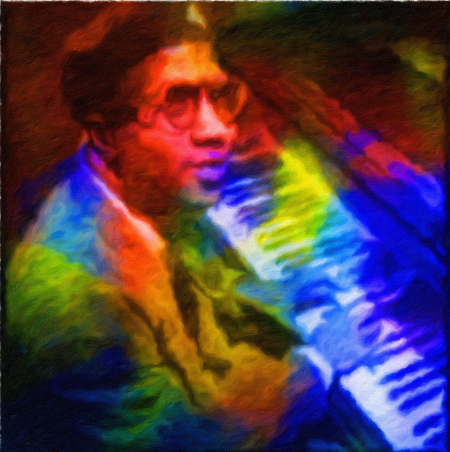

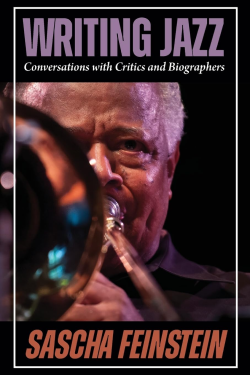

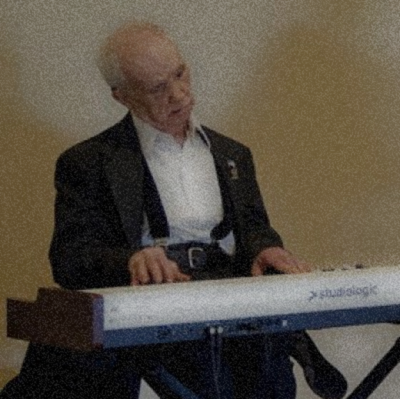
”The Subtle Art of Dinner Music” by Fred Shaw
The Sunday Poem is published weekly, and strives to include the poet reading their work.... Fred Shaw reads his poem at its conclusion
Click here to read previous editions of The Sunday Poem

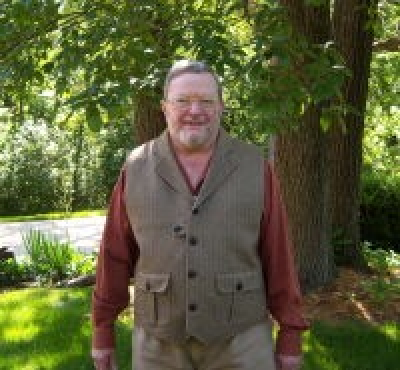
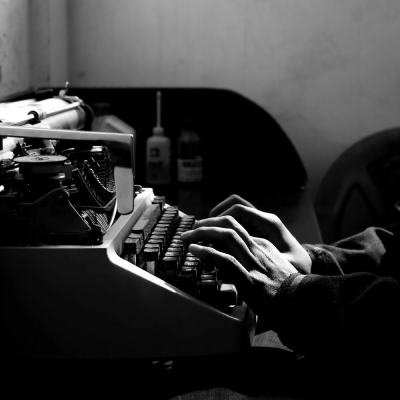

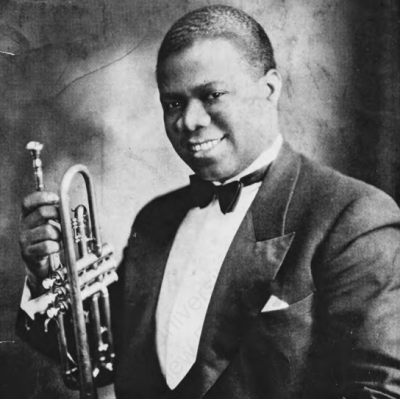
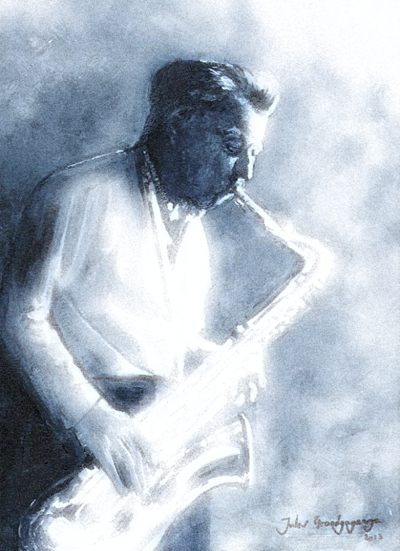

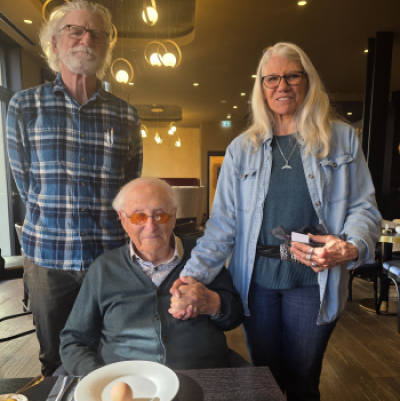

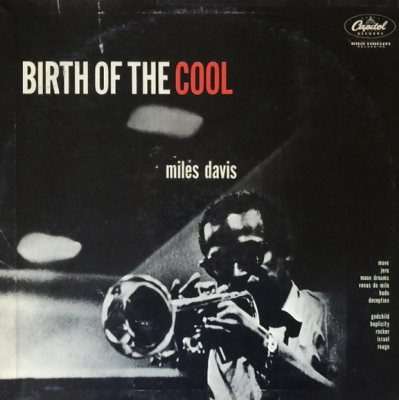
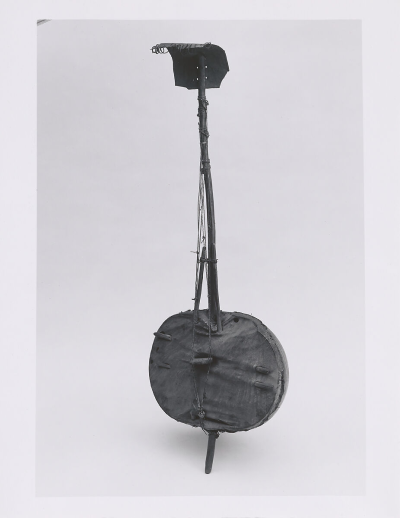


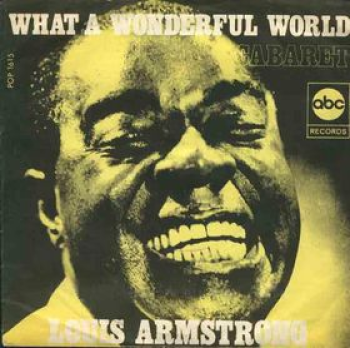
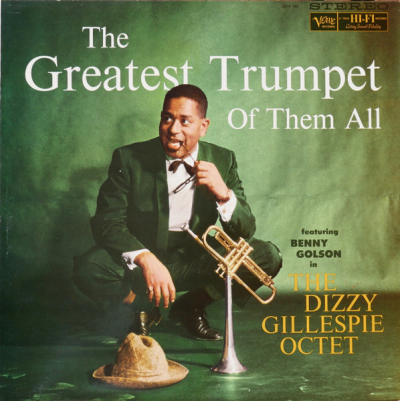
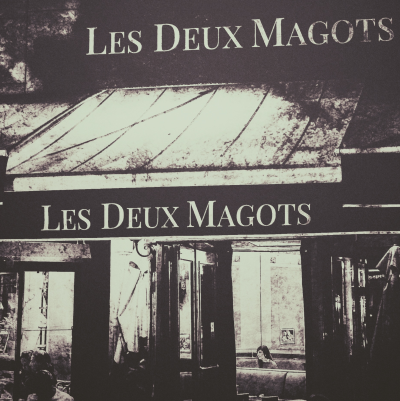
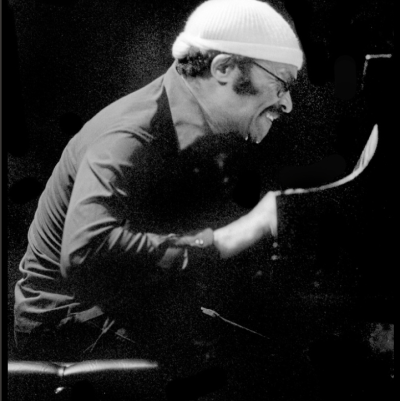
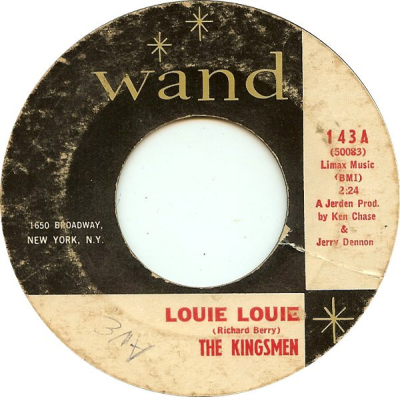
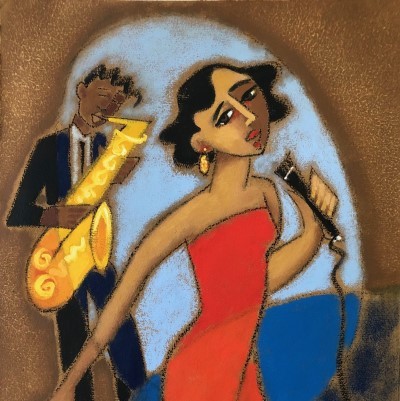


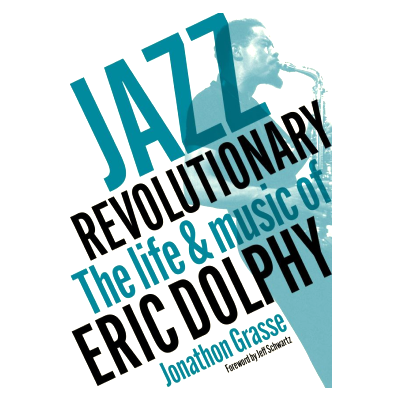


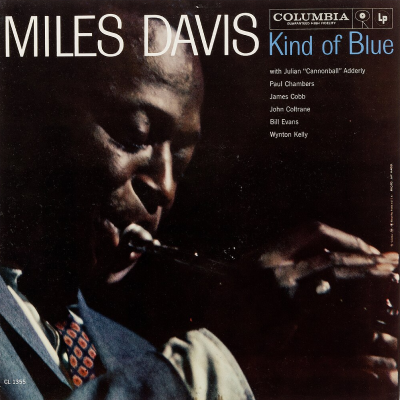
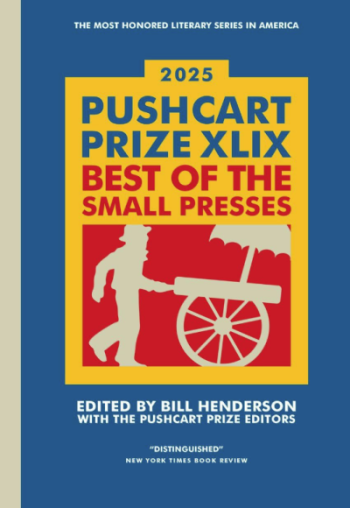




Dear Readers:
Reader funding helps support the expense of publishing this website, and to keep it free of advertising – which is a rarity in the dot-com world. Many thanks to those who have recently contributed, and to those who have done so multiple times. Your support is very much appreciated.
If you are able, please consider making a contribution? Information regarding how to do so is found by clicking here.
For viewing my long range vision for Jerry Jazz Musician, please click here.
To view the content on Jerry Jazz Musician, simply click on the “close” tab.
Thank you!
Joe Maita
Editor/Publisher
,

